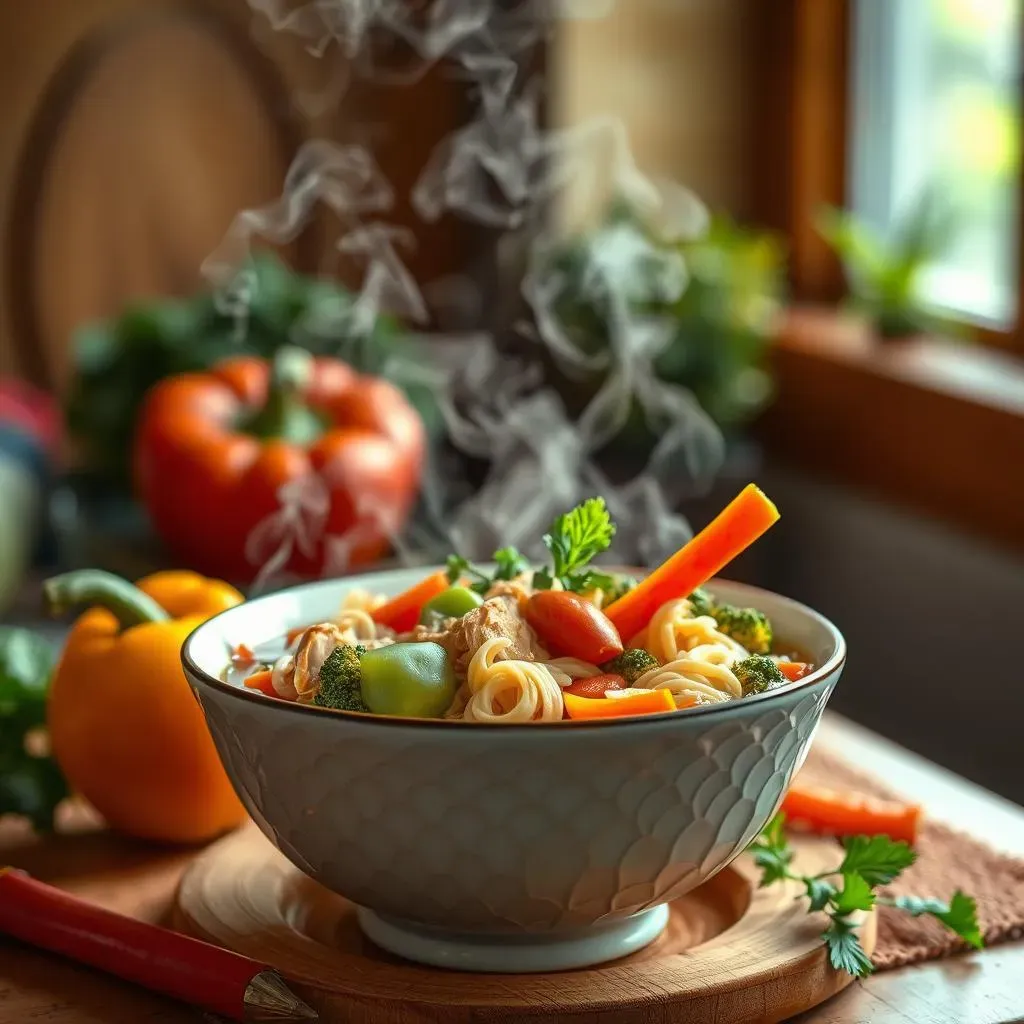Table of Contents
Ever stared into a bowl of chicken noodle soup and thought, "This could use a serious veggie upgrade?" You're not alone. That comforting classic is good but it's screaming for some fresh, flavorful friends. We're not just talking about the usual carrots and celery here. This isn't your grandma's soup (unless your grandma is super adventurous, in which case, kudos!). I will show you how to add vegetables to chicken noodle soup, and make it a vibrant, healthy, and totally customizable meal. This article will guide you through classic combinations, introduce you to some unexpected additions, and give you the lowdown on how to avoid the dreaded soggy veggie situation. We'll also explore how to make the vegetables the real stars of the show, not just background players. Get ready to transform your chicken noodle soup from basic to brilliant, one veggie at a time. Let's dive in!
Classic Veggies for Chicken Noodle Soup
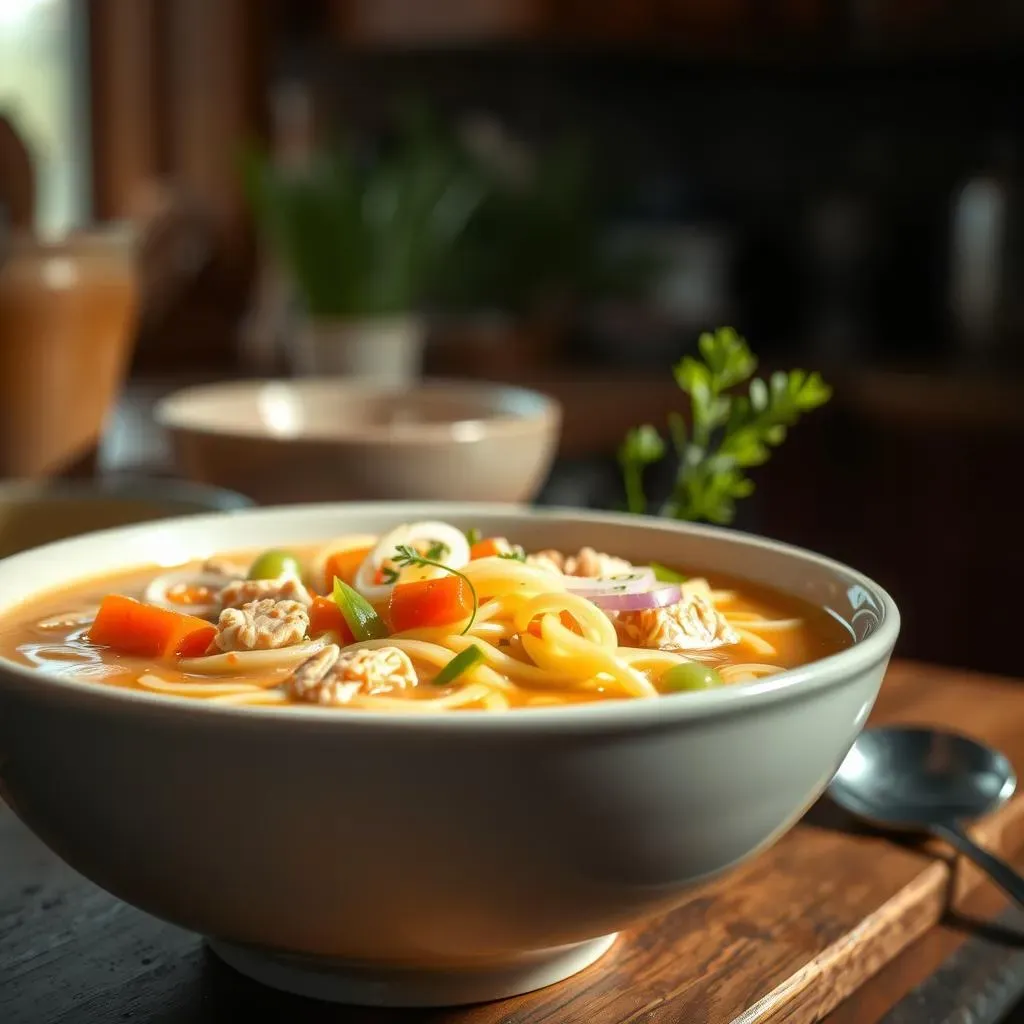
Classic Veggies for Chicken Noodle Soup
Okay, so you're making chicken noodle soup, and you want to keep it classic? No problem, we can do that. The real MVPs here are the holy trinity of soup vegetables: onions, carrots, and celery. They're like the bandmates who've been playing together for years; they just work. The onion gives you that savory base, the carrots bring a touch of sweetness and color, and the celery adds a subtle earthy note. They're not flashy, but they're essential. I like to chop them all up roughly the same size, about a half-inch dice, so they cook evenly. Don't skip these guys; they're the foundation of a truly great chicken noodle soup. Think of them as the rhythm section of your soup symphony.
Beyond the main trio, some folks swear by garlic. I mean, who doesn't love garlic? It's like the cool cousin that hangs out with the band, always adding a little extra something special. I usually toss in a couple of minced cloves right after the onions, carrots, and celery have softened up a bit. Also, don't be afraid to use the leafy tops of the celery; they have a lot of flavor and add a nice pop of green. A bay leaf is another classic move. It's not a vegetable, I know, but it adds a subtle herbal note that makes the soup taste like it's been simmering for hours. Remember to take it out before serving, though, nobody wants to bite into a bay leaf.
Vegetable | Why it's a Classic | How to Prep |
|---|---|---|
Onion | Savory base, depth of flavor | Dice roughly |
Carrots | Sweetness, color | Dice roughly |
Celery | Earthy note, subtle flavor | Dice roughly, use leaves |
Garlic | Aromatic, adds depth | Mince finely |
Creative Ways to Add Vegetables to Chicken Noodle Soup
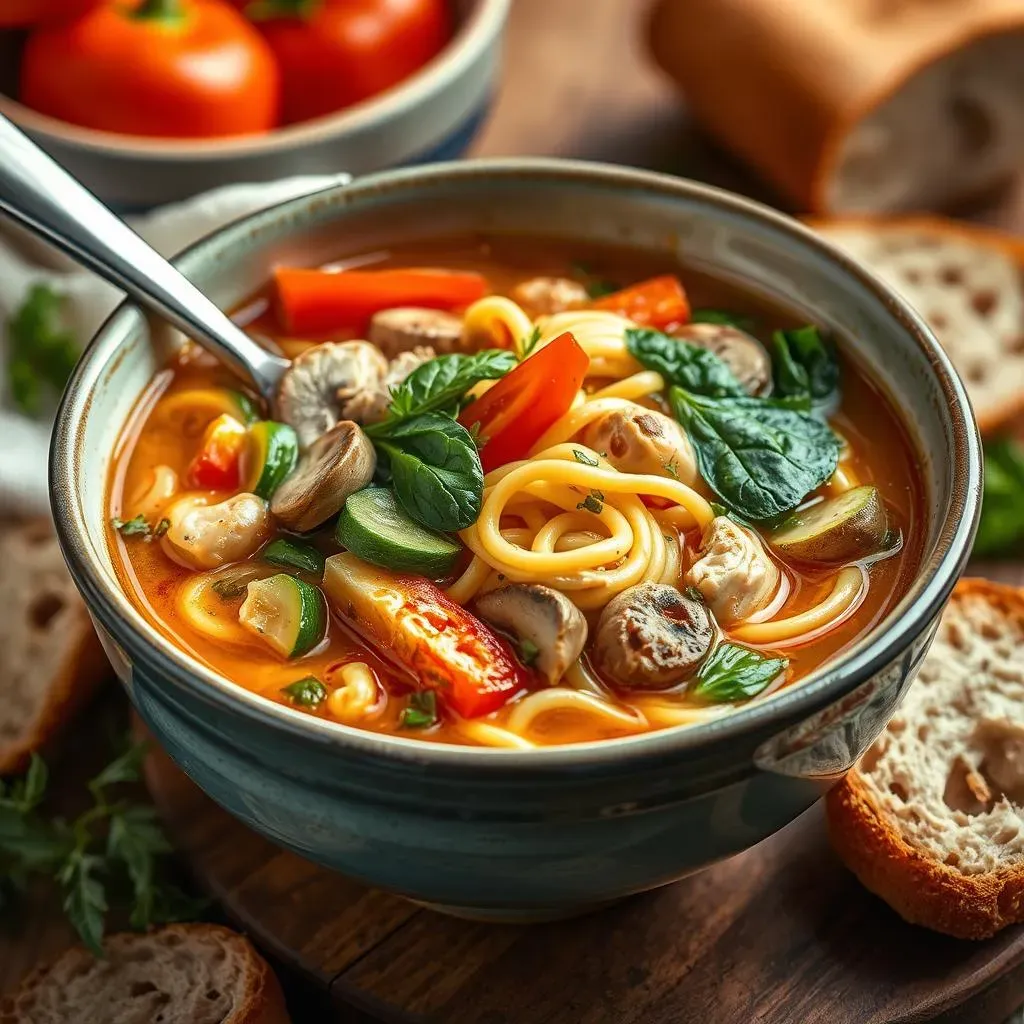
Creative Ways to Add Vegetables to Chicken Noodle Soup
Think Beyond the Basics
Alright, let's get a little wild. You've got your classic veggies down, but what if you want to take your chicken noodle soup to a whole new level of deliciousness? This is where it gets fun. Forget what you think you know about soup veggies. We're going rogue! I'm talking about adding things like zucchini or yellow squash for a subtle sweetness and a nice texture. Or how about some chopped bell peppers for a pop of color and a bit of a crunch? Don't be afraid to experiment. This is your soup, after all. Think of your fridge as your personal veggie playground. What's in there that could make your soup more interesting?
Another great option is leafy greens. Spinach, kale, or even chard can add a ton of nutrients and a little bit of earthiness. I usually throw them in during the last few minutes of cooking, so they wilt but don't get too mushy. And if you're feeling fancy, why not some mushrooms? They add a wonderful umami flavor that makes the soup taste richer and more complex. I like to use cremini or shiitake mushrooms, but any kind will work. Just slice them up and sauté them a bit before adding them to the soup. We are not holding back here.
Adding Some Surprises
Let's talk about some less obvious choices. Have you ever considered adding some broccoli or cauliflower florets? They add a nice bit of texture and soak up the broth beautifully. I like to add them about halfway through the cooking time, so they get tender but don't turn to mush. And for a little bit of a zing, try adding some diced tomatoes. They add a nice acidity that cuts through the richness of the broth. Canned diced tomatoes work just fine, or you can use fresh ones if you have them. I'm also a big fan of adding some frozen peas at the very end, for a pop of sweetness and freshness.
Don't forget about root vegetables, either! Parsnips, turnips, or even sweet potatoes can add a unique flavor and some extra heartiness. Just dice them up into small pieces, so they cook through. The key here is to think about what flavors and textures you enjoy and then try to incorporate them into your soup. There are no rules, really, so have fun with it! The goal is to make a soup that you'll crave, and that's all that matters. Think of your soup as a blank canvas, and you are the artist!
Vegetable | Why it's Great | How to Add |
|---|---|---|
Zucchini/Squash | Subtle sweetness, nice texture | Dice and add with other veggies |
Bell Peppers | Color, crunch | Chop and add with other veggies |
Spinach/Kale | Nutrients, earthiness | Add at the end to wilt |
Mushrooms | Umami flavor | Sauté before adding |
Broccoli/Cauliflower | Texture, soaks up broth | Add halfway through cooking |
Tomatoes | Acidity, cuts through richness | Dice and add with other veggies |
Frozen Peas | Sweetness, freshness | Add at the very end |
Root Vegetables | Unique flavor, heartiness | Dice and add early in cooking |
How to Keep Your Vegetables in Chicken Noodle Soup from Getting Soggy
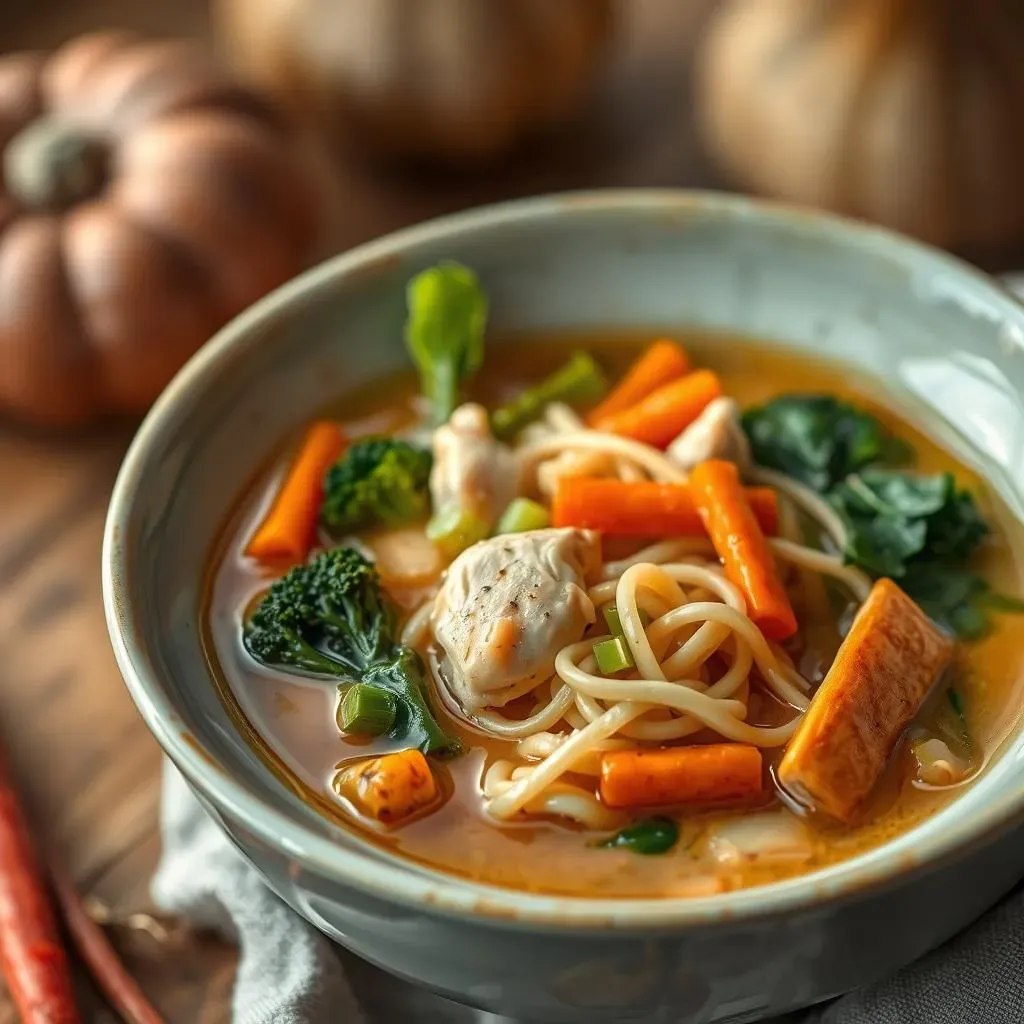
How to Keep Your Vegetables in Chicken Noodle Soup from Getting Soggy
Timing is Everything
Okay, so you've got all these beautiful veggies ready to go, but nobody likes a mushy vegetable. The secret to keeping your veggies from turning into a sad, soggy mess is all about timing. You don't want to throw everything in at once and let it all overcook. Instead, think about the cooking time of each vegetable. Heartier veggies like carrots, potatoes, and broccoli can go in earlier, since they take longer to cook. Softer veggies like zucchini, spinach, and peas should go in towards the end. It's like a carefully choreographed dance in your soup pot, with each veggie knowing its cue.
Another trick is to not overcook the vegetables. I know, I know, it sounds obvious, but it's so easy to get distracted and let things simmer for too long. Keep an eye on them, and when they're just tender-crisp, they're ready. They'll continue to cook a bit in the hot soup, so you want to pull them off the heat before they get too soft. Also, if you're planning on making a big batch and eating it over a few days, consider adding the softer veggies each time you reheat a portion. This way, you'll have fresh, crisp veggies every time, and you wont get that mushy soup that no one likes. It's like having a brand new bowl of soup each time!
The Separate Cooking Method
If you're really serious about avoiding soggy veggies, you can go the extra mile and cook them separately. I know, it sounds like extra work, but trust me, it's worth it. You can quickly sauté heartier vegetables like carrots, celery, and onions in a pan before adding them to the soup. This not only prevents them from overcooking in the broth, but it also adds a touch of extra flavor. For softer veggies like spinach or peas, you can quickly blanch them in boiling water for a minute, then immediately plunge them into ice water to stop the cooking process. This will help them keep their vibrant color and crisp texture. Then, just add them to the soup right before serving. It's a bit more effort, but it's a game-changer for the texture of your soup.
Another great tip is to avoid adding vegetables to the soup if you are not going to eat it right away. If you know you'll have leftovers, only add the vegetables to the portion you're going to eat right then. You can store the soup and vegetables separately, and then combine them when you're ready to eat. This is especially important if you are planning on freezing the soup. Freezing vegetables can sometimes make them mushy, so it's best to add them fresh when you reheat the soup. This is a bit like having your cake and eating it too; you get to have delicious soup with fresh vegetables whenever you want!
Method | How it Works | Best For |
|---|---|---|
Timing | Adding veggies at different stages based on cooking time | Most veggies, easy and quick |
Sautéing | Lightly cooking heartier veggies before adding to soup | Heartier veggies like carrots, celery, onions |
Blanching | Briefly boiling and then shocking softer veggies | Softer veggies like spinach, peas |
Separate storage | Storing the soup and veggies separately | For leftovers or freezing the soup |
Making Chicken Noodle Soup with Vegetables the Star
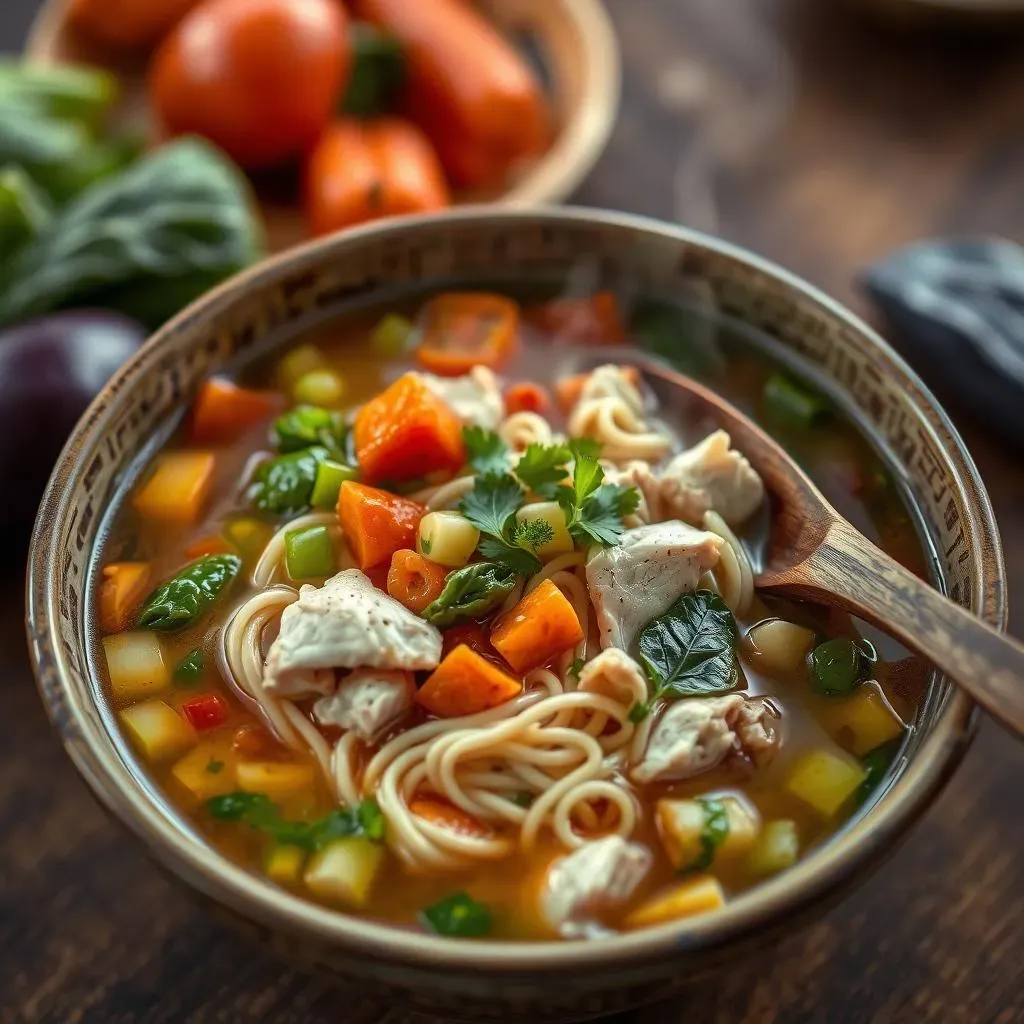
Making Chicken Noodle Soup with Vegetables the Star
Okay, so you've mastered the art of adding veggies to your chicken noodle soup, but what if you want to take it a step further and make the vegetables the real stars of the show? It's not just about throwing in a bunch of random veggies; it's about creating a balance of flavors and textures that makes the soup truly shine. Think of it like this: you're not just making chicken noodle soup with vegetables; you're making a vegetable masterpiece with a little bit of chicken and noodles. I know it might sound like a big change, but it's all about how you approach it. It’s about letting those veggies have their moment in the spotlight, not just being supporting characters.
One of the best ways to make your vegetables the star is to use a variety of colors and textures. Don't just stick to the usual carrots and celery. Try adding some vibrant bell peppers, some earthy mushrooms, and some leafy greens. The more variety you have, the more interesting the soup will be. And don't forget about the importance of presentation. Instead of just chopping all the veggies into small pieces, try cutting some of them into different shapes. You can use a vegetable peeler to create ribbons of carrots or zucchini, or you can cut some of the vegetables into large chunks so they stand out. It's all about making the soup look as good as it tastes. Remember, you eat with your eyes first!
Tip | How to Do It | Why It Works |
|---|---|---|
Variety | Use different colors and textures | Makes the soup more interesting |
Presentation | Cut veggies into different shapes | Makes the soup look more appealing |
Seasoning | Season veggies while cooking | Enhances their natural flavor |
Roasting | Roast some veggies before adding them | Adds depth and sweetness |
Another way to elevate your vegetable game is to really focus on seasoning. Don't just season the broth; season the vegetables as well. When you're sautéing your onions, carrots, and celery, add a pinch of salt and pepper. This will help to bring out their natural flavors and make them taste even better. And don't be afraid to experiment with different herbs and spices. A little bit of thyme or rosemary can add a wonderful earthy note, while a pinch of red pepper flakes can add a touch of heat. It's like giving your vegetables a little extra love, and it really does make a difference. Also, consider roasting some of your vegetables before adding them to the soup. Roasting brings out their natural sweetness and adds a nice depth of flavor. You can roast some carrots, sweet potatoes, or even some mushrooms, and then add them to the soup right before serving. It's a bit of extra effort, but it's worth it. It transforms them from simple vegetables into flavor bombs that make the whole soup sing.
